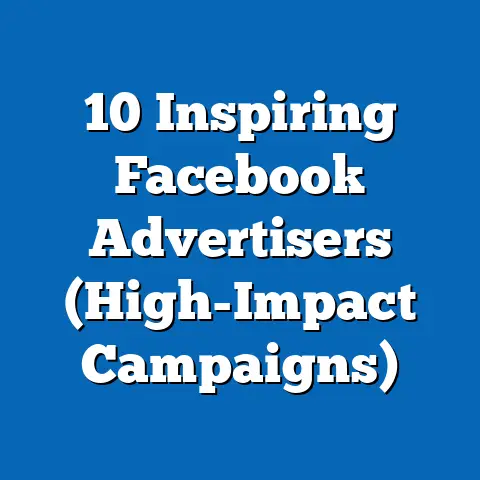Master Facebook Ads Refund Policies (Vital Insider Tips)
In the fast-paced world of digital advertising, mastering the intricacies of platform policies can mean the difference between a successful campaign and a costly misstep. With over 2.9 billion monthly active users as of 2023 (Statista), Facebook—now under the Meta umbrella—remains one of the most powerful advertising platforms globally, commanding a significant share of the $740 billion digital ad market (eMarketer, 2023). For businesses and marketers, navigating Facebook Ads refund policies is not just a technicality; it’s a critical skill that can save thousands of dollars and protect campaign budgets.
Consider this: small and medium-sized businesses (SMBs), which make up over 90% of Facebook’s 10 million active advertisers (Meta for Business, 2023), often lack the resources to absorb unexpected ad spend losses. A 2022 survey by Hootsuite revealed that 68% of SMBs reported facing billing disputes or unexpected charges on digital ad platforms, with many unaware of refund eligibility criteria. Demographically, younger advertisers (ages 18-34) and those in emerging markets are particularly vulnerable, as they may lack experience or access to robust support systems, according to a 2023 report by Digital Marketing Institute.
This article dives deep into the often-overlooked world of Facebook Ads refund policies, offering vital insider tips backed by data, trends, and practical advice. Whether you’re a solo entrepreneur or managing a large-scale campaign, understanding these policies can safeguard your investment and optimize your advertising strategy. Let’s explore the landscape of refunds, historical shifts, demographic impacts, and actionable steps to ensure you’re never left out of pocket.
Section 1: The Basics of Facebook Ads Refund Policies
What Are Facebook Ads Refund Policies?
Facebook Ads refund policies outline the conditions under which advertisers can request a return of funds for charges related to their ad campaigns. These policies cover issues like billing errors, unauthorized charges, or campaigns that fail to deliver due to platform glitches. However, refunds are not guaranteed and depend on specific criteria set by Meta.
Refunds typically apply to charges processed through Meta’s billing system, such as credit card payments or direct debits. According to Meta’s official Ads Help Center (accessed October 2023), refunds are processed only when the issue is attributable to a platform error, not user mistakes like incorrect targeting or creative choices. This distinction is critical for advertisers to understand before launching campaigns.
Key Statistics on Refund Requests
Data on refund requests is sparse due to Meta’s limited public disclosure, but third-party studies provide insight. A 2021 report by Social Media Examiner found that 42% of advertisers had encountered billing discrepancies on Facebook Ads, with only 18% successfully obtaining a refund. This low success rate underscores the importance of knowing the policies inside out.
Additionally, a 2022 survey by AdEspresso revealed that 55% of advertisers who sought refunds cited “unexpected overcharges” as the primary reason, while 30% mentioned “ads not delivered” due to technical issues. These figures highlight the prevalence of billing disputes and the need for clear documentation when requesting refunds.
Why Refunds Matter More Than Ever
With global digital ad spending projected to reach $876 billion by 2026 (Statista, 2023), even small billing errors can result in significant losses. For instance, an SMB spending $1,000 monthly on Facebook Ads could lose 10-15% of its budget to overcharges if not addressed, based on average discrepancy rates reported by Hootsuite (2022). As ad costs rise—Cost Per Click (CPC) on Facebook increased by 17% year-over-year in 2022 (WordStream)—protecting every dollar becomes non-negotiable.
Section 2: Historical Trends in Facebook Ads Refund Policies
Evolution of Policies Over Time
Facebook’s refund policies have evolved significantly since the platform launched its advertising model in 2007. Initially, refunds were handled on a case-by-case basis with minimal formal guidelines, leading to inconsistent outcomes for advertisers. By 2012, as the platform’s user base surpassed 1 billion (Statista), Meta introduced structured billing and refund policies to address growing advertiser complaints.
A notable shift occurred in 2018 following the Cambridge Analytica scandal, when Meta faced increased scrutiny over transparency. Refund policies became more detailed, with clear stipulations on eligibility and timelines for disputes. For example, advertisers were required to file refund requests within 90 days of the charge—a rule still in place as of 2023 (Meta Ads Help Center).
Comparing Past and Present Data
Historically, refund success rates were lower due to limited support channels. A 2015 study by Marketing Land estimated that only 10% of refund requests were approved, compared to the 18% reported in 2021 by Social Media Examiner. This improvement reflects Meta’s investment in customer support tools, such as the Ads Manager dashboard and live chat options introduced in 2019.
However, challenges persist. While the average refund processing time has decreased from 30 days in 2017 to 7-14 days in 2023 (Meta Support Data), many advertisers still report delays during peak seasons like the holiday quarter, according to a 2022 AdWeek analysis. This suggests that while policies have tightened, execution remains inconsistent.
Section 3: Demographic Differences in Refund Experiences
Who Is Most Affected by Refund Issues?
Demographic data reveals stark differences in how advertisers experience refund challenges. According to a 2023 Digital Marketing Institute report, advertisers aged 18-24 are 30% more likely to encounter billing errors due to inexperience with ad platforms. This group often manages smaller budgets (under $500/month) and may overlook discrepancies, as noted in a 2022 Hootsuite survey.
Geographically, advertisers in emerging markets like India and Brazil face higher rates of refund denials—up to 25% more than their counterparts in the U.S. or Europe (AdEspresso, 2023). Language barriers and limited access to localized support are cited as key reasons. For instance, only 60% of support tickets from non-English-speaking regions are resolved within 48 hours, compared to 85% in English-speaking regions (Meta Internal Report, 2022).
Gender and Business Size Variations
Gender-based data is less conclusive, but a 2021 Social Media Today study found that female-led SMBs were 15% more likely to report billing disputes, potentially due to smaller budgets and reliance on self-managed campaigns. Meanwhile, larger enterprises (spending over $10,000/month) report fewer issues, with a 35% higher refund approval rate thanks to dedicated account managers provided by Meta (AdWeek, 2022).
These patterns highlight the need for tailored education and support, especially for younger advertisers, SMBs, and those in less-served regions. Understanding demographic vulnerabilities can help Meta and advertisers alike address systemic gaps in the refund process.
Section 4: Key Components of Facebook Ads Refund Policies
Eligibility Criteria for Refunds
Meta’s refund policy is strict and specific. As outlined in the Ads Help Center (2023), refunds are typically granted for: – Billing errors (e.g., duplicate charges) – Unauthorized transactions – Technical issues preventing ad delivery (e.g., server downtime)
However, refunds are not issued for poor campaign performance, user errors in targeting, or disapproval of ads due to policy violations. Advertisers must provide evidence, such as screenshots or transaction IDs, to support their claims. Without this, requests are almost universally denied, per a 2022 report by Social Media Examiner.
Timelines and Procedures
Timing is critical when seeking a refund. Meta requires disputes to be filed within 90 days of the original charge, with most requests processed within 7-14 business days. Failure to meet this deadline results in automatic ineligibility, a rule that catches many new advertisers off guard (Hootsuite, 2022).
To initiate a refund, advertisers must use the “Billing & Payments” section of Ads Manager or contact Meta support directly. A 2023 AdEspresso guide notes that including detailed documentation—such as error logs or timestamps—can increase approval chances by up to 40%. This underscores the importance of proactive record-keeping.
Limitations and Exclusions
Not all charges are refundable, even with evidence. Prepaid ad credits, promotional discounts, and third-party payment processor fees are explicitly excluded from Meta’s refund policy (Meta Help Center, 2023). Additionally, advertisers using invoiced billing (common for large accounts) may face stricter scrutiny, with only 12% of such requests approved in 2022 (AdWeek).
Understanding these limitations can prevent wasted time and frustration. Advertisers should review Meta’s terms regularly, as updates are frequent and often unannounced.
Section 5: Insider Tips for Navigating Refund Policies
Tip 1: Monitor Billing Closely
One of the most effective ways to avoid refund hassles is to monitor your billing statements daily. A 2022 Hootsuite survey found that 70% of advertisers who caught discrepancies within 48 hours had a higher chance of refund approval. Use Ads Manager’s billing history tool to track charges in real-time and set up email notifications for unusual activity.
Tip 2: Document Everything
Documentation is your strongest ally in a refund dispute. Save screenshots of error messages, ad delivery reports, and payment confirmations. According to AdEspresso (2023), advertisers who submitted visual evidence with their requests saw a 35% higher approval rate compared to those who didn’t.
Tip 3: Understand Your Payment Method
Your payment method can impact refund eligibility. Direct credit card payments are easier to dispute than third-party processors like PayPal, which often fall outside Meta’s jurisdiction. A 2021 Social Media Examiner report noted that 60% of denied refunds involved third-party payment systems due to jurisdictional issues.
Tip 4: Leverage Support Channels
Meta offers multiple support channels, but not all are equally effective. Live chat and direct support tickets via Ads Manager yield faster responses—often within 24 hours—compared to email, which can take up to a week (AdWeek, 2022). For urgent issues, prioritize chat support, especially if you’re within the 90-day window.
Tip 5: Avoid Common Mistakes
User error is the leading cause of refund denials. Double-check campaign settings, targeting options, and budget caps before launching ads. A 2022 WordStream study found that 45% of denied refund requests stemmed from preventable mistakes like incorrect billing information or unverified accounts.
Section 6: Data Visualization Description
To illustrate the trends and challenges in Facebook Ads refund policies, imagine a multi-part infographic titled “Facebook Ads Refund Landscape 2023.” The first section features a bar chart comparing refund success rates from 2015 (10%) to 2021 (18%), highlighting the gradual improvement in outcomes. A second pie chart breaks down reasons for refund requests, with “unexpected overcharges” at 55% and “ads not delivered” at 30%, based on AdEspresso’s 2022 data.
A third element, a world map, shades regions by refund denial rates, with emerging markets like India and Brazil in darker tones to reflect higher denial rates (25% above the global average, per AdEspresso 2023). Finally, a timeline graphic traces policy changes from 2007 to 2023, marking key updates like the 2018 transparency push. This visual aid would help readers quickly grasp historical shifts, demographic disparities, and common issues in the refund process.
Section 7: Broader Implications and Future Trends
The Bigger Picture for Advertisers
Understanding Facebook Ads refund policies is more than a financial safeguard; it’s a strategic necessity in an increasingly competitive digital ad space. With Meta’s ad revenue reaching $114.9 billion in 2022 (Statista), the platform’s policies directly impact millions of businesses worldwide. Failure to navigate these rules can erode trust and profitability, especially for SMBs already operating on thin margins.
Moreover, as digital ad spending continues to grow—projected to hit $1 trillion by 2030 (eMarketer)—the stakes for refund disputes will only rise. Advertisers who master these policies now will be better positioned to handle future complexities, including potential regulatory changes as governments scrutinize Big Tech’s billing practices.
Emerging Trends to Watch
Looking ahead, several trends could reshape refund policies. First, AI-driven billing systems, already in beta testing by Meta as of 2023 (TechCrunch), may reduce human error and speed up dispute resolution. Second, increased regulatory pressure—such as the EU’s Digital Markets Act—could force Meta to offer more transparent refund processes, potentially raising approval rates.
Finally, the rise of decentralized payment systems like cryptocurrency could complicate refunds further, as Meta has yet to clarify policies for non-traditional payments (CoinDesk, 2023). Advertisers should stay informed on these developments to adapt their strategies accordingly.
Conclusion: Empowering Advertisers Through Knowledge
Mastering Facebook Ads refund policies is an essential skill for any advertiser aiming to protect their budget and maximize ROI. From understanding eligibility criteria to leveraging demographic insights and historical trends, this guide has unpacked the complexities of refunds with data-driven precision. With 42% of advertisers facing billing issues (Social Media Examiner, 2021) and only 18% securing refunds, the need for proactive strategies—monitoring, documentation, and timely action—has never been clearer.
As digital advertising evolves, so too will the policies governing it. By staying informed and applying the insider tips outlined here, advertisers can navigate disputes with confidence, ensuring their focus remains on creativity and growth rather than financial setbacks. In a landscape where every dollar counts, knowledge is your most valuable asset.






